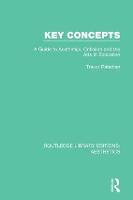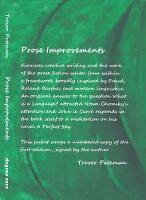Anne Applebaum’s
becomes a very readable book and impresses as very well documented and argued,
but it starts badly. The bad start has something to do with her own prejudices
and something to do with a language problem compounded in all probability by a
surfeit of uncoordinated research assistance. I will focus on these two
problems.
At page 19, we read
that the Bolsheviks’ “coup d’état in
October (7 November according to the ‘new calendar’ they later adopted) put
them in power amidst conditions of total chaos. Led by Lenin, a paranoid,
conspiratorial and fundamentally undemocratic man, the Bolsheviks …”
Now I am only going to
argue with one part of this. Why the snide scare quotes around ‘new calendar’? In Bolshevik-controlled Russia, the 31 January
1918 was followed by 14 February. This switch from the Julian to the Gregorian
calendar replaced a less accurate with a more accurate calendar: both calendars
involve slippage but the Julian slips at the rate of one day in 128 years, the
Gregorian by one day in 3030 years. More
importantly, all of Russia’s neighbours already used the Gregorian
calendar and the Bolsheviks simply brought their country into line with the norm
in Europe’s – er, capitalist – countries. When you wrote a letter, personal or
business, to someone in those countries you no longer needed to use dual dating
to prevent confusion. The only remarkable feature about Russia’s ‘new calendar’
is that it took a bloody upheaval to bring about an overdue administrative reform
and that incidentally tells us something interesting and important about the
old regime. In the same way, my own country would probably need a revolution to arrive at a fixed date for Easter but, fortunately, there is no chance of any such thing here.
The language problem is
more complex. Applebaum has written her book with the support of what are or
were Ukrainian diaspora organisations in Canada and the USA, notably the
Harvard Ukrainian Research Institute. They have protocols to tell you how to
transliterate from Ukrainian to English, which is excellent, and Applebaum
tells us that she is going to use them. What is not excellent is that some of
the Ukrainian words your friends point you towards are essentially recent
inventions which are simply anachronistic when used in historical discussions. The
most egregious example appears at page 9, where Applebaum tells us that the city
of what is now called Donetsk was originally called ‘Yuzivka’ in honour of its
founder, the Welshman John Hughes. It wasn’t. It was called ‘Yuzovka’ or ‘Iuzovka’,
which are standard transliterations from the Russian original. Applebaum has
instead transliterated from a modern Ukrainian word which is essentially an invention.
Yuzovka was a Russian company town and remained so until it was renamed ‘Trotsk’
in 1923 (after Trotsky) and then ‘Stalino’ (after Stalin) and finally in 1961 ‘Donetsk’
which is the name by which it is known today, and helpfully by both Russians and Ukrainians. The word Yuzivka has no historical purchase,
merely an ideological one.
In addition, simplistic
and anachronistic language purists never actually achieve the ideological consistency
they want. Human beings just can’t cope with their demands. This is obvious
from Applebaum’s very sloppy maps. I
have no desire to wear you down, so I will take just one, her map titled Ukraine, 1922. The old Imperial Russian
guberniyas had been slightly re-organised by that date to create the Ukrainian
SSR but the map gives them their names in a mix of versions, some transliterated
from Ukrainian (Kyiv, Kharkiv) and some from Russian (Podolia, Odessa). Town
and city names are also mixed. Some versions are Ukrainian (Proskuriv not Proskurov) others are Russian (Melitopol, Mariupol not Melitopil, Mariupil). Yuzovka
is given its post-1961 name, Donetsk. I am sure Applebaum has been inundated
with emails picking up on these and other points but we should probably acknowledge that we are never gong to get it right. She does use maps which
exclude Crimea from Ukraine, which is historically accurate: the administrative
transfer to Ukraine was made in 1954.
Some years ago I was
asked to prepare for auction in Switzerland what was probably the largest
collection of Ukrainian stamps and postal history ever assembled. The catalogue
was going to be written in English. When it became known that I was going to do
this work, I got emails from diaspora Ukrainians reminding me of spellings and
transliterations I should employ. That was helpful, but I had to point out that
I was keen to avoid anachronism and falsification. At the time of the first
Ukrainian stamp issues in 1918, language questions were not much of a priority in Ukraine and old Imperial Russian postal cancellations continued in use for some years (something which,
in contrast, did not happen in the newly independent Baltic countries which were
keen to switch from Cyrillic to Roman immediately). Before the early or even mid 1920s, only a couple of cities produced any Ukrainian language postmarks (Kyiv and Kharkiv) and even those were simply used alongside the old ones. So I ended up writing
catalogue entries which read, for example, “Letter from Kyiv with cancellation
KIEV 10.10.18”, the capitalised letters transliterating the Russian of the postmark.
But I am sure I slipped up from time to time, just as most people do when they
alternate between civilisation and civilization without even noticing. And
in my view, most of the time we should relax and live with the slippage unless
some question of historical accuracy is at stake.
*
When we get past all
this, we get a book which I think is more tightly argued than her book on the
Gulag. She assembles a great deal of material but is cautious about using the
word genocide and gives a reasoned estimate
for the numbers who died in the Holodomor, the artificial famine of 1932 – 33, designed in
Moscow but implemented on the ground by Ukrainians as well as Russians. The
photographs she uses are important and some of them will be new to readers. [ Added 3 July 2018: see also my review of Philippe Sands, East West Street on this Blog, 5 February 2018. Sands thinks that in general the concept of crimes against humanity has more to commend it than the concept of genocide. In that perspective (I am extrapolating), the burden passes from proving that Stalin targetted Ukrainian peasants to proving (much more easily) that he targetted peasants whose way of doing things stood in the way of a megalomaniac agricultural policy, rather in the way that Mao was later to do in China. The national, ethnic, cultural or linguistic categories into which the peasant fell was irrelevant to Mao. But that did not stop them starving to death].
One thing she does not
discuss but which I think is relevant is this. Like Russia, Ukraine has a major boundary
problem. The creation of Ukrainian identity has been difficult because there
are not enough mountain ranges and
rivers creating natural boundaries. After Imperial Russia collapsed in 1917,
Ukrainian nationalists laid claim to territories extending considerably beyond
today’s boundaries (especially in the north and east). When you look at their maps, you
start to see straight lines reminiscent of those favoured by Europe’s imperial
powers when they carved up Africa and the Middle East. In the absence of
natural boundaries, cultural nationalism assumes exaggerated importance and so
does the tendency towards cultural imposition. In the present instance, both
Russian and Ukrainian nationalisms came into conflict over territories whose
people, left to their own devices, would probably have ended up living in the kind of inconsistent and
compromising ways which enrage bureaucrats, imperialists and pedants.










